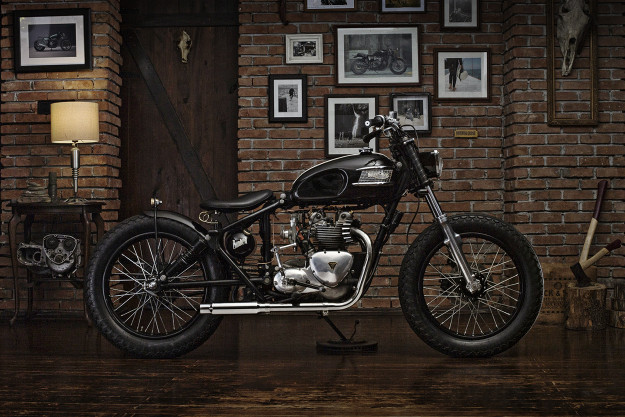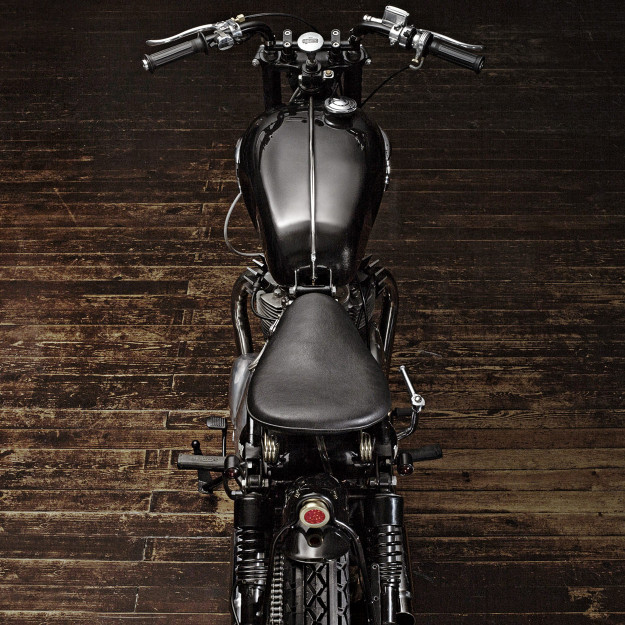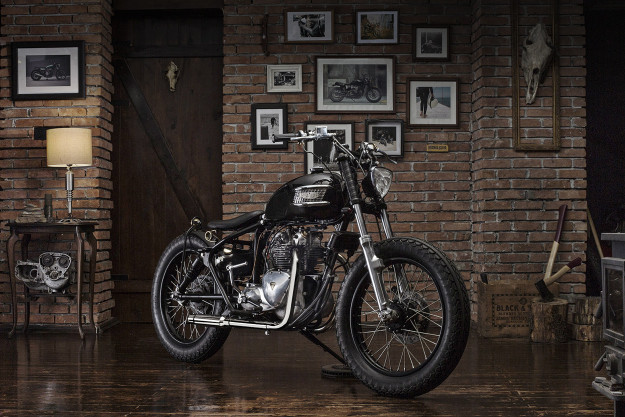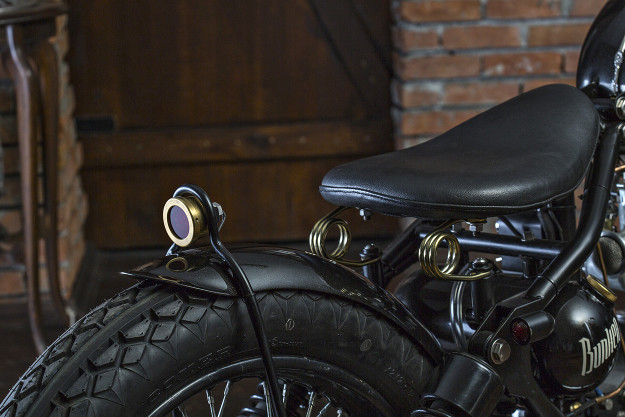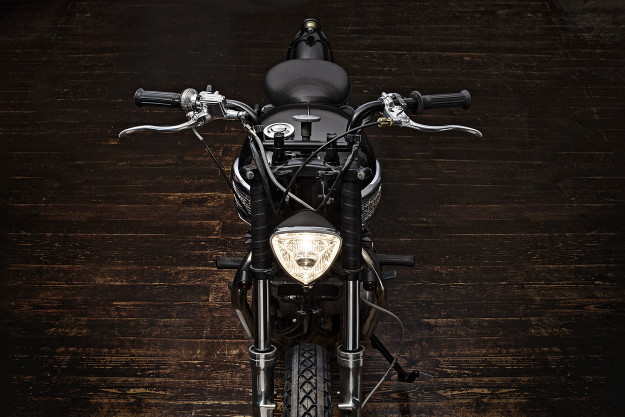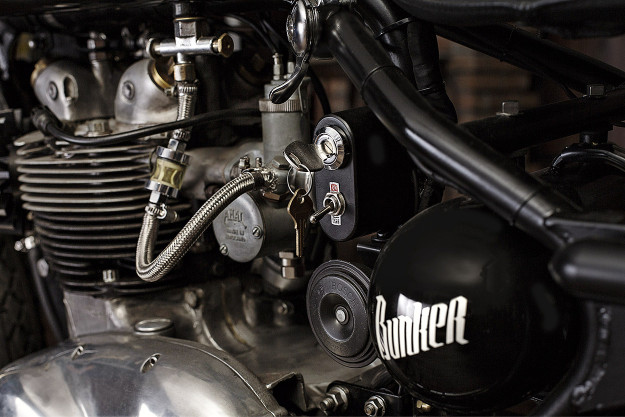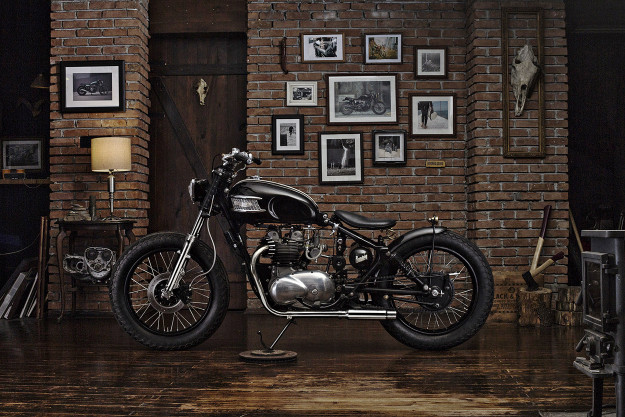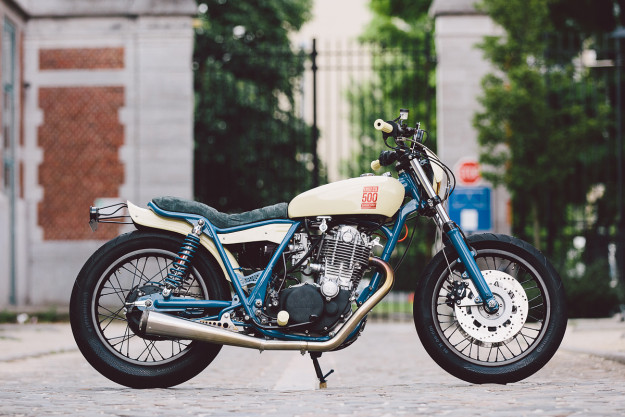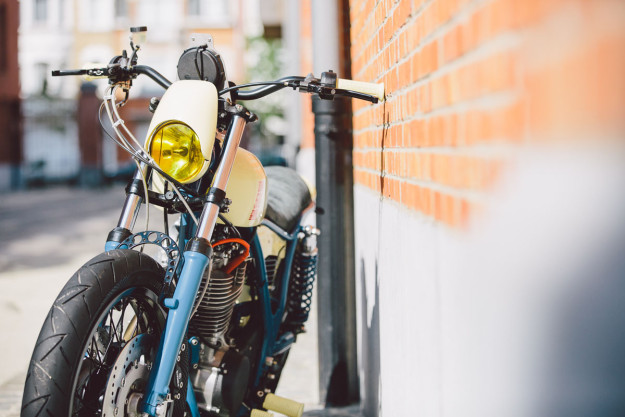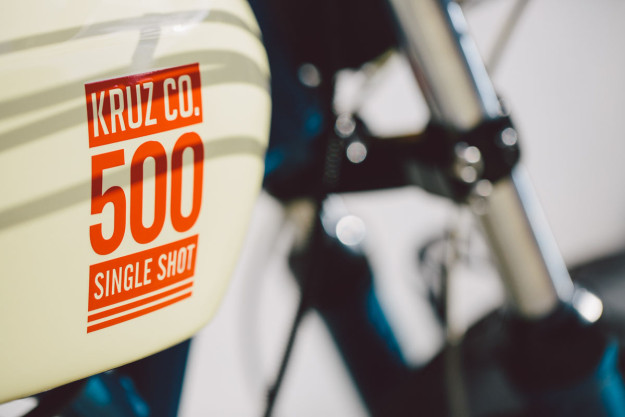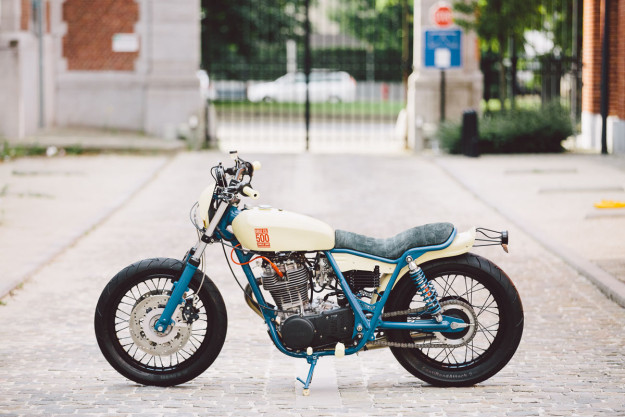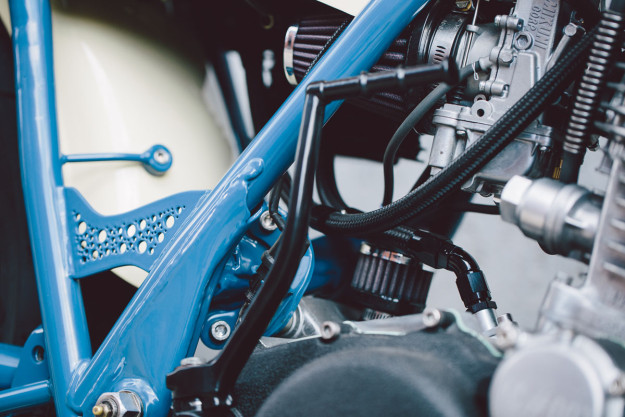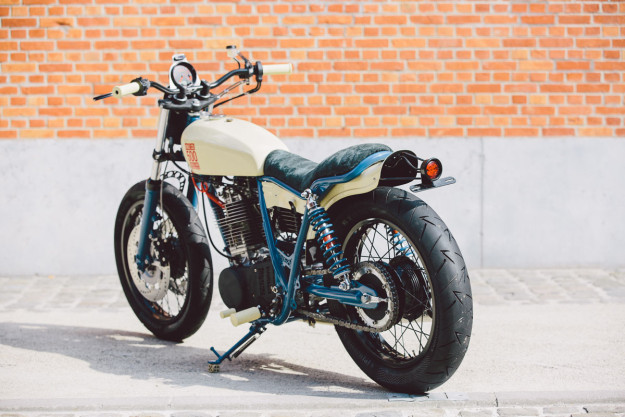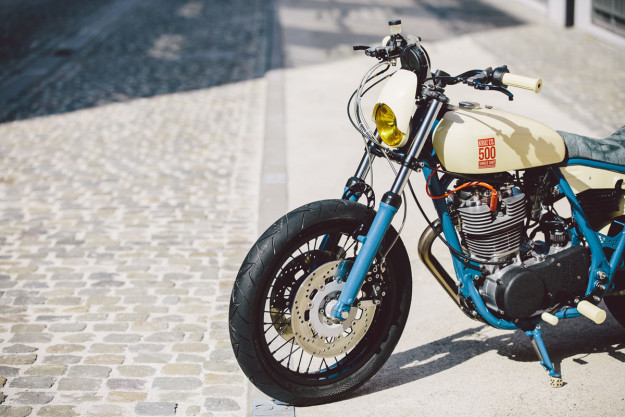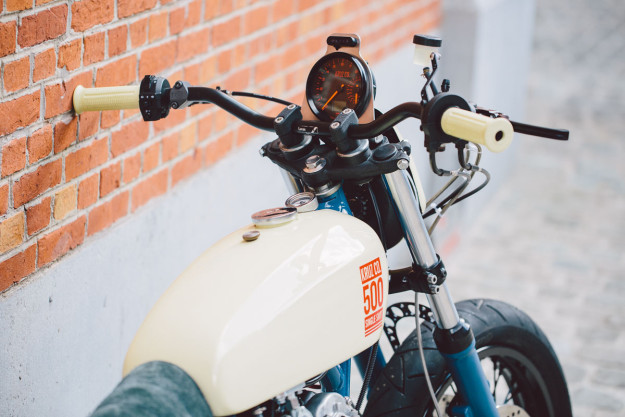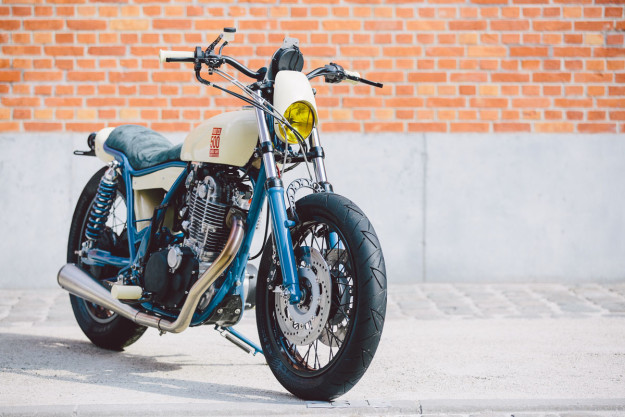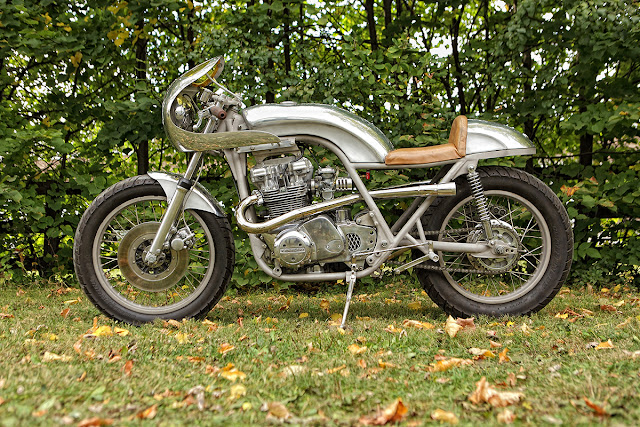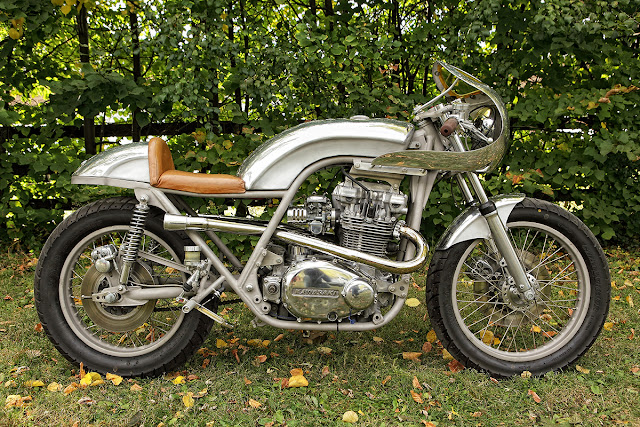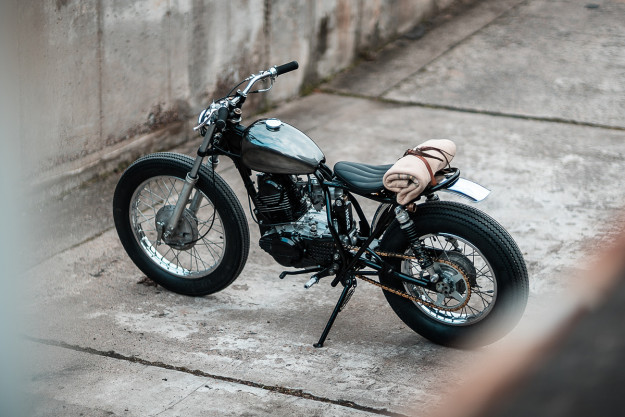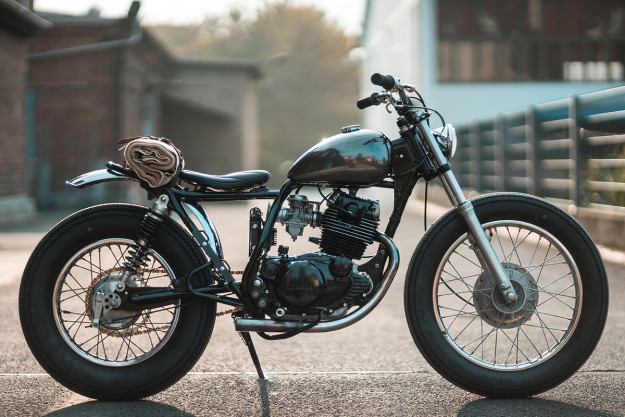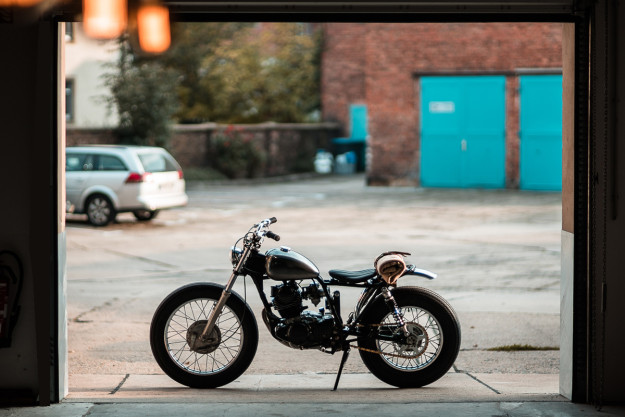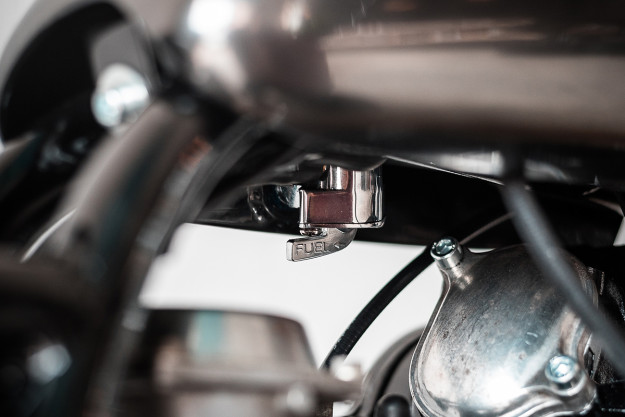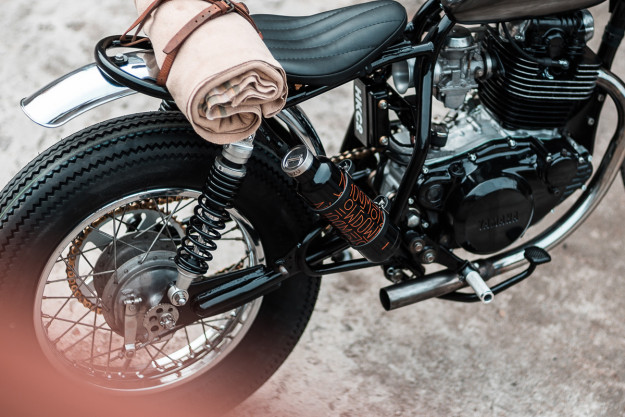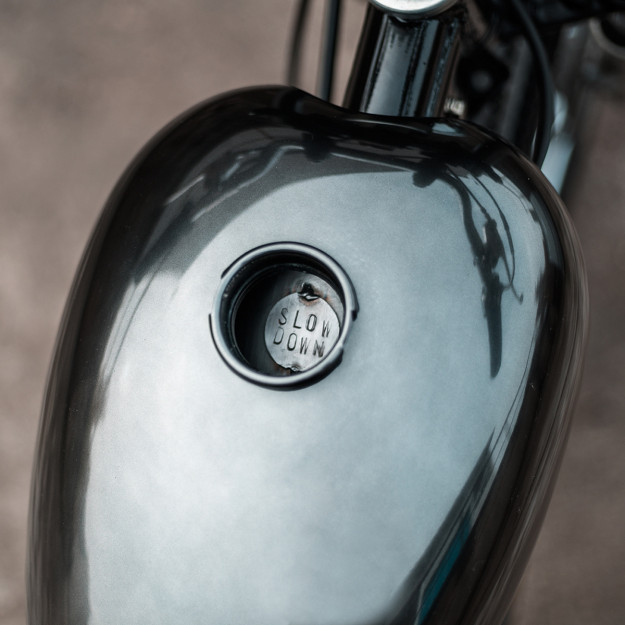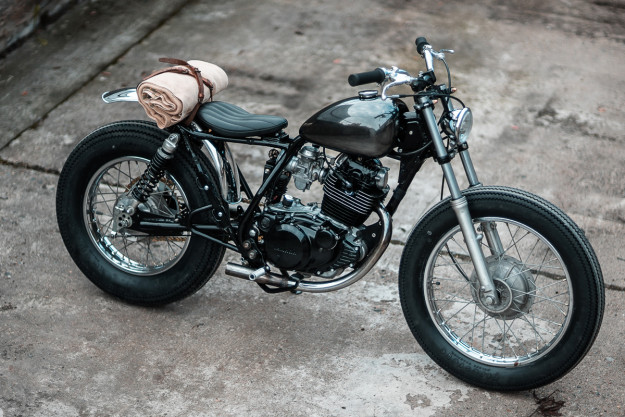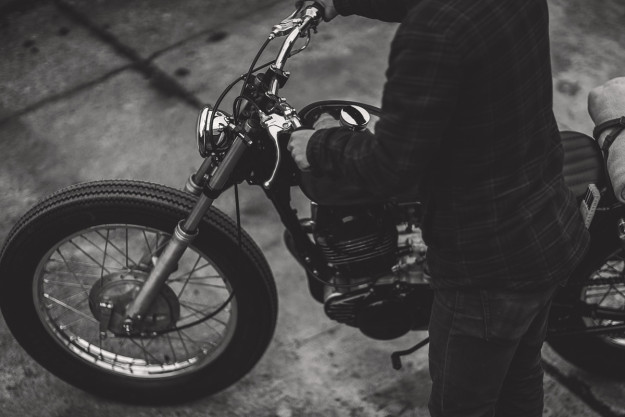Modern Triumph customs are ubiquitous. And with the new Bonnevilles hitting the market, the trend shows no signs of slowing down.We’ve got a sweet tooth for vintage Triumphs though. Especially when they’re as beautiful as this liquorice-flavored bobber from Turkey’s Bunker Custom Cycles.
It’s based on a 1961 Triumph Speed Twin 5TA, a machine infamous for its bulbuous ‘bathtub’ rear fairing. But builders Mert and Can Uzer had a different look in mind, and it’s a huge improvement.They’ve completely redesigned the back half of the Triumph’s frame. At a glance, it looks like the rear end is rigid—but it’s actually a soft-tail, with a pair of Burly Brand shocks. The front end has been radically revised too: It’s now set lower thanks to Suzuki T500 Titan forks.
The Suzuki’s front disc brake was brought across too, for extra stopping power. New rims tweak the stance, with a 19F/18R combo replacing the stock 18F/17R setup.Bunker have also fabricated a tight rear fender from aluminum, capping it off with a brass tail light from Dime City Cycles. It’s neatly integrated into the mounting bracket.
The Speed Twin’s tank is stock—along with the period-correct badges—but the solo seat is new, complete with brass springs. Other brass details have been tastefully sprinkled throughout the build—like the oil tank cap, and the adjusting screws on the controls.Bunker have done well to mix original Triumph parts with carefully selected aftermarket bits. The headlight’s off-the-shelf, but the bucket’s been modified to better suit the bike. Behind it is a set of Biltwell Inc. bars, sporting upgraded controls and a stainless steel brake line.
Mods aside, the little 500’s had its fair share of restoration work done too.Highlights include a full engine rebuild (with new, high-comp pistons), tweaks to the wiring, and a full blast and re-coat of the frame.
There’s also new oil tank, a small oil cooler, and a pair of stubby mufflers. And the ignition and kill-switch have been relocated to under the seat—just below the choke.
The result is a compact, well-balanced bobber, finished in a glossy ‘sparkle black’ hue.And doesn’t it wear it well?
First published on www.bikeexif.com/
| Images by Eren Göktürk and Kaan Eryürek
